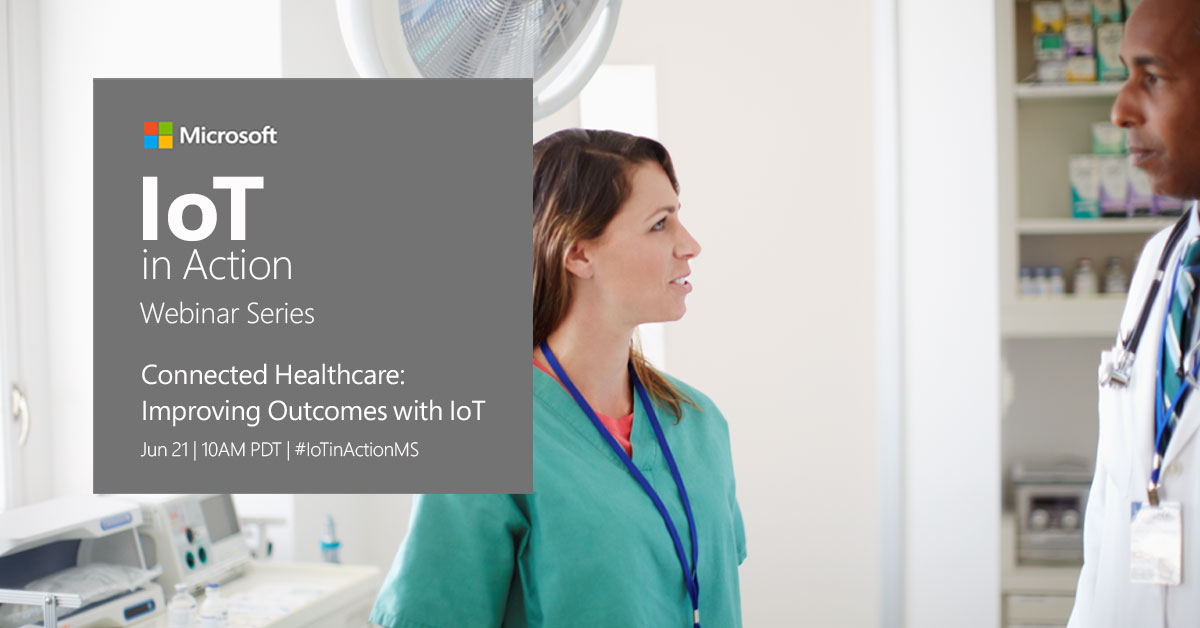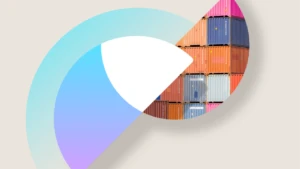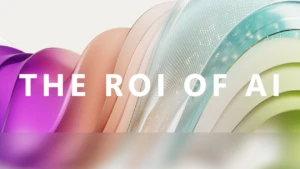
The Rise of Connected Healthcare with IoT
For decades, there has been an ongoing conversation about ways we might reimagine healthcare to rein in costs and improve outcomes. To that end, the Internet of Things (IoT) may be just what the doctor ordered. IoT healthcare solutions can help lower medical costs, improve quality, and make healthcare more personal, accessible, and affordable for patients.
According to Becker’s Hospital Review, 70% of hospital executives worldwide attribute growth to keeping up with technology trends.1 Yet if the healthcare industry is to better serve patients and offer a true connected healthcare experience, companies need to do more than adapt to growing trends. They must also figure out how to successfully implement IoT solutions across all levels of their organization.
Here I will examine how IoT solutions are empowering organizations to move toward a patient-centric approach to health. To learn more, register for Microsoft’s IoT in Action webinar: Connected Healthcare – Improving Outcomes with IoT on June 21.

Enabling Cloud-Based Transformation
Digital healthcare has enormous potential with the market for IoT healthcare solutions projected to reach $158B USD by 2022 compared to $41B USD in 2017.2 But it’s not until devices are connected to the cloud and to each other that they become game-changing for an organization. With live data from smart sensors and devices, healthcare organizations can receive visibility into operational status, allowing them to quickly respond to current conditions.
Using an IoT platform like Azure, there are several ways healthcare organizations benefit by connecting and controlling devices:
1. Simplify patient monitoring while reducing healthcare costs
Remote monitoring of assets connected to the healthcare provider delivers personalized patient care anytime/anywhere and equips the care team with a near real-time view of the patient’s health and activities.
2. Optimize machine utilization
Medical staff can spend less time searching and more time with patients when they connect and track machines, supplies, and other assets through the cloud and monitor their usage for optimal deployment.
3. Proactively replenish supplies
Healthcare facilities can better monitor, maintain, and automate life-saving vaccine storage and distribution by connecting devices to the cloud and proactively replenishing contents.
Other benefits of cloud computing are greater trust around security of health data; almost infinite scale for storing and processing large amounts of data; increased speed in gaining access to new tools, more storage space, or greater computing power; and economic use of resources.
Capturing & Managing Medical Data
Connected devices and applications are fueling an explosion in medical data, bringing greater accuracy to patient diagnoses, medical caregiving, and ongoing monitoring. By 2020, medical data will double every 73 days; each person will create more than 1 million gigabytes of personal health data; and 646 million IoT devices will be used by providers, payers, and consumers.3, 4
Instead of simply generating all this data and sending it to the cloud, IoT edge devices can process and analyze it to gain insights so care teams can act quickly. This requires a new, smarter type of software application that can not only gather the data, but also use dashboards and distributed analytics to make the data easy to understand and act on. As such, healthcare employees can securely access and manage vital content from anywhere.
The success of digital healthcare and connected devices will also be determined by how well providers are equipped to use the patient data collected by devices. Healthcare organizations can integrate confidential patient data with other sources, such as fitness and health monitoring devices, sensors, and implants to create rich, constantly evolving profiles. Or, they can use predictive models to create personalized treatment plans and employ business intelligent (BI) tools to analyze and visualize population needs.
In the end, it’s simple. If healthcare organizations are to successfully predict patients’ future health considerations and care, they will require high-quality access to data on premises and on-the-go coupled with enhanced usability and the ability to analyze data. And with 97% of patients expressing raised expectations for their healthcare5 – among which is the expectation that every health institution has access to their full medical history – the need for connected healthcare with IoT has never been clearer.
IoT in Action Webinar: Improving Health Outcomes with IoT
As the healthcare industry makes rapid progress toward utilizing IoT to improve patient health outcomes and streamline communication practices, they are still discovering opportunities and challenges. Register for the IoT in Action Connected Healthcare webinar on June 21, 2018 (PDT), June 26, 2018 (SGT), or June 28, 2018 (CEST) to hear from industry experts at Microsoft and discover key solutions from Microsoft Healthcare IoT Partner, HCL Technologies.
For more on IoT, check out the new IoT in Action webinar series.
[1] Spitzer, J. (2017), ‘70% of hospital executives attribute growth to keeping up with technology trends’, available at https://www.beckershospitalreview.com/data-analytics-precision-medicine/70-of-hospital-executives-attribute-growth-to-keeping-up-with-technology-trends.html (accessed 4th June, 2018).
2 Markets and Markets (2017), ‘IoT Healthcare Market’, available at https://www.marketsandmarkets.com/Market-Reports/iot-healthcare-market-160082804.html (accessed 21st May, 2018).
3 Ahmed, M.N., Toor, A.S., O’Neil, K., and Friedland, D. (2017), ‘Cognitive Computing and the Future of Health Care’, available at https://pulse.embs.org/may-2017/cognitive-computing-and-the-future-of-health-care/ (accessed 1st June, 2018).
4 Meloa, A. (2016), ‘Internet of Things in healthcare: Information technology in health’, available at http://www.businessinsider.com/internet-of-things-in-healthcare-2016-8 (accessed 1st June, 2018).
5 Alviso, J. (2018), ‘Why Your Practice Should Be Embracing Digital Health’, available at http://www.chartlogic.com/blog/why-your-practice-should-be-embracing-digital-health/ (accessed 4th June, 2018).




